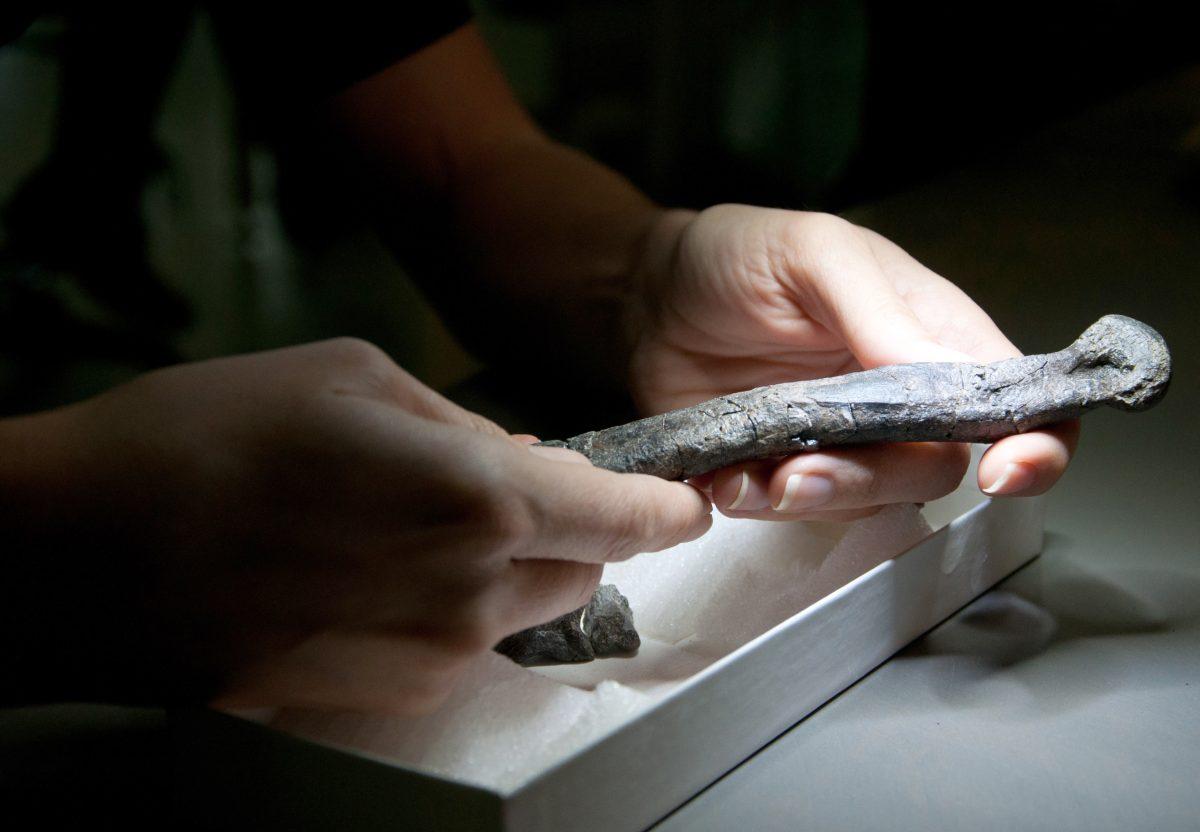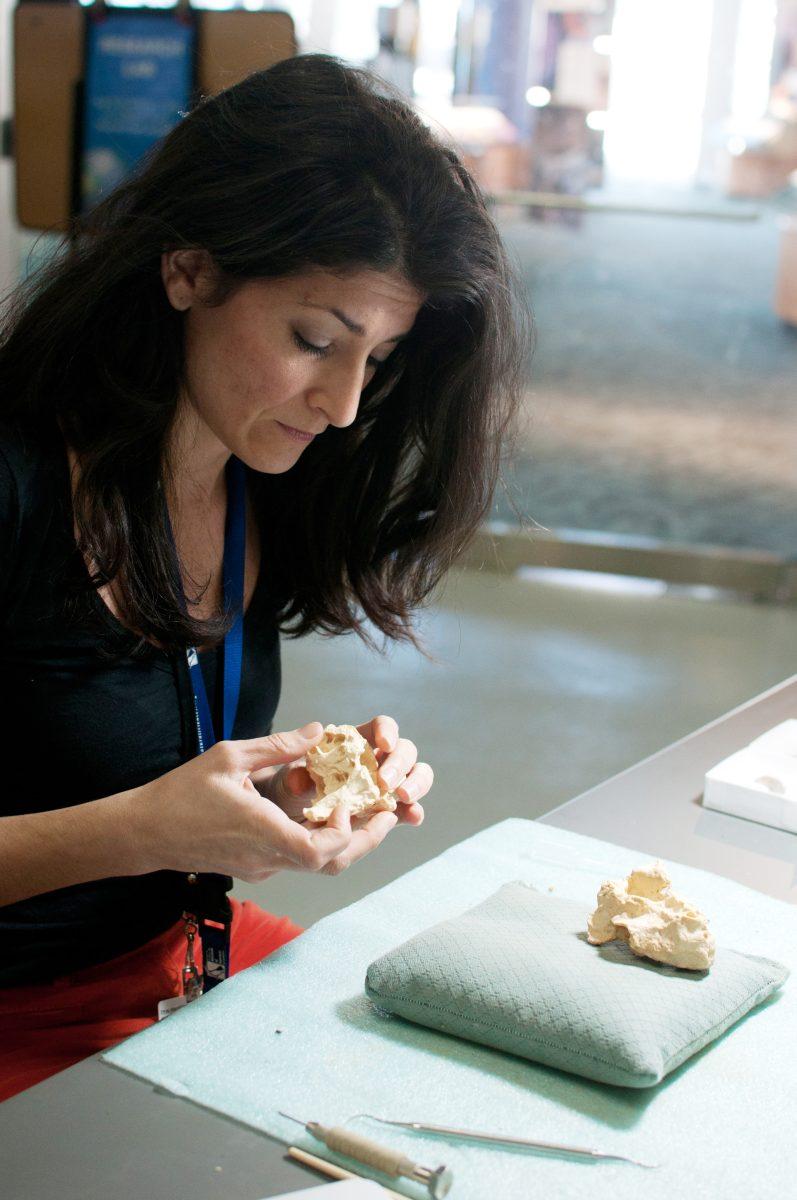Ever wonder how the dinosaurs of hundreds of millions of years ago lived — how they moved about, how they smelled, how they thought or if they even thought at all? Scientists at N.C. State University are collaborating with experts in the United Kingdom to study the brains of dinosaurs in order to gain better insight into the daily lives of these reptiles.
Recently, the group has been studying the computed tomography (CT) scan of a rare species of theropod dinosaurs known as Erlikosaurus andrewsi – a 10-foot-long, feathered, bird-like animal that existed about 90 million years ago in the region that is now Mongolia.
Lindsay Zanno, professor of biology at the University and one of the main researchers of this project, said the group is particularly interested in the andrewsi sub-species because typically the Erlikosaurus lineage consisted of fearsome hunters but this specific dinosaur was actually an herbivore.
“In creating a 3-D model of the brain, we were able to look into the depths of the brain structure as well as inner ear to determine the significance of areas such as hearing, sight and smell,” Zanno said.
With only a few remaining skulls of the Erlikosaurus andrewsi known to exist, the team of researchers seized the opportunity to scan the skull that was in the possession of a Mongolian scientist, who had kept it locked away in a safe. That opportune moment when the scientist visited the U.K. with the skull marked the beginning of this research two years ago.
“We were primarily interested in the sensory toolkit, which also gave us some understanding of the intelligence level of the animal,” Zanno said.
While predators traditionally have strong sensory systems that are necessary to survive, researchers were shocked to find that the Erlikosaurus andrewsi, an herbivore, also had strong sensory receptors, which was very atypical of non-hunters.
“Our results suggest that [these dinosaurs] would have used their well-developed sensory repertoire to their advantage, which, for herbivorous animals, must have played an important role in foraging, in the evasion of predators or in social complexity,” said Stephan Lautenschlager, another main researcher from the University of Bristol.
Zanno agreed, saying that once an animal develops an advanced sensory toolkit, it is hard to lose and definitely worth hanging on to, whether you are hunting or being hunted.
Although reptile brains are far different and underdeveloped compared to mammalian brains, studying the cavities allowed the scientists to digitally regenerate parts of the brain in order to infer which regions of the brain dominated the rest.
“Of course the lack of brain tissue inhibited us, but technology is so far advanced now that we feel that the 3-D model we built of the brain is likely accurate,” Zanno said. “One thing that would help us be more sure would be a larger sample because although there isn’t much differentiation between similar types of dinosaurs, larger sample size could help us to see something we possibly missed the first time.”
One thing that is still unknown is the actual reason as to why the Erlikosaurus andrewsi had such advanced sensory intuition. Lautenschlager postulates that the dinosaur developed superior intelligence possibly due to inheritance from older ancestors or even for the ability to smell plants for dietary reasons. Realistically, Lautenschlager knows that it is probably a combination of several things that are going to remain uncovered until they study more skulls.
“This study has important ramifications for our complete understanding of how sensory functions evolved in different dinosaur groups and it sheds a new light on the evolution of dinosaur senses proving that these animals may be more sophisticated and complex than we originally thought,” Zanno said.
Lindsay Zanno, a research assistant professor in biology examines the brain casing of a therizinosaur at the Paleontology and Geology Research Lab in the Nature Research Center at the Museum of Natural Sciences in downtown Raleigh.









